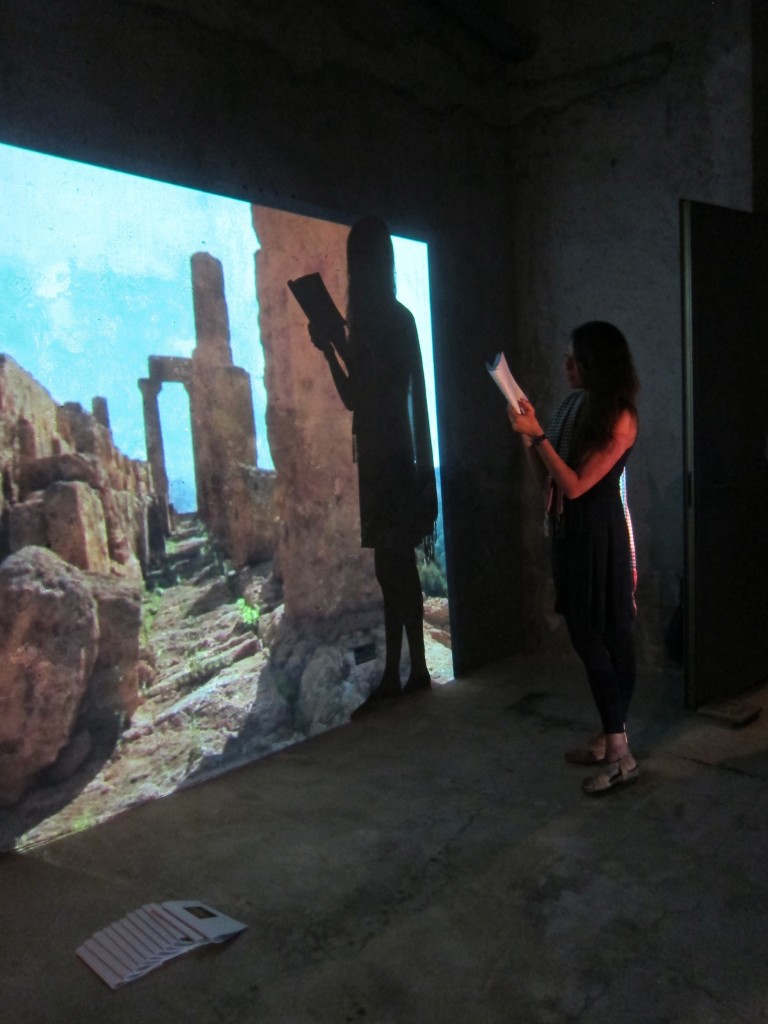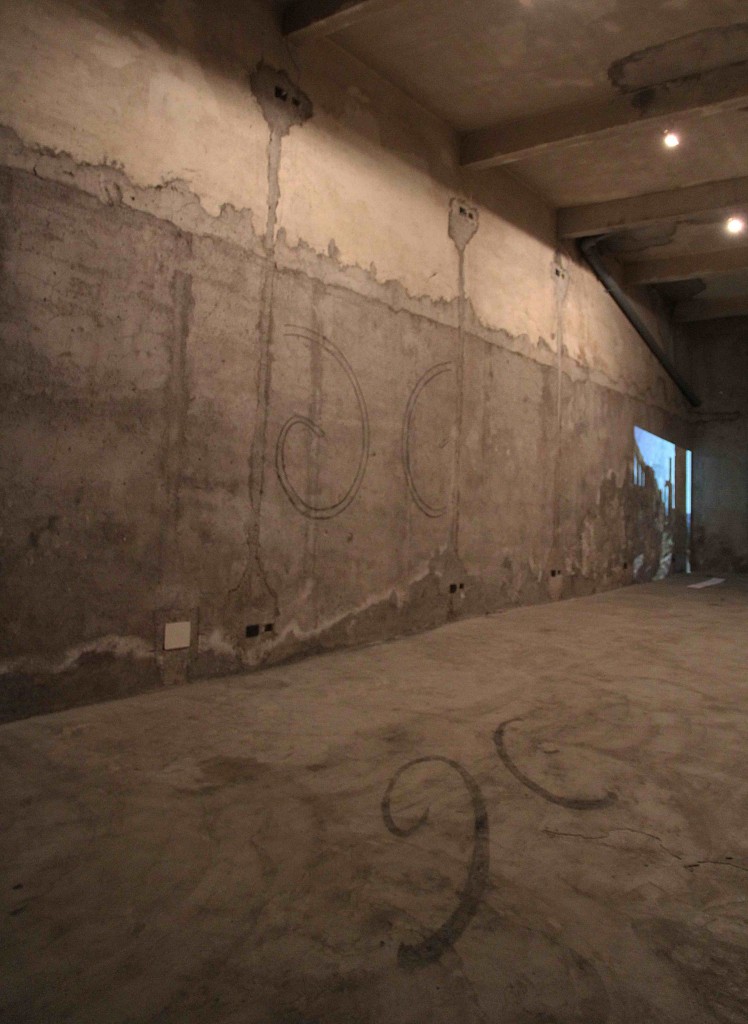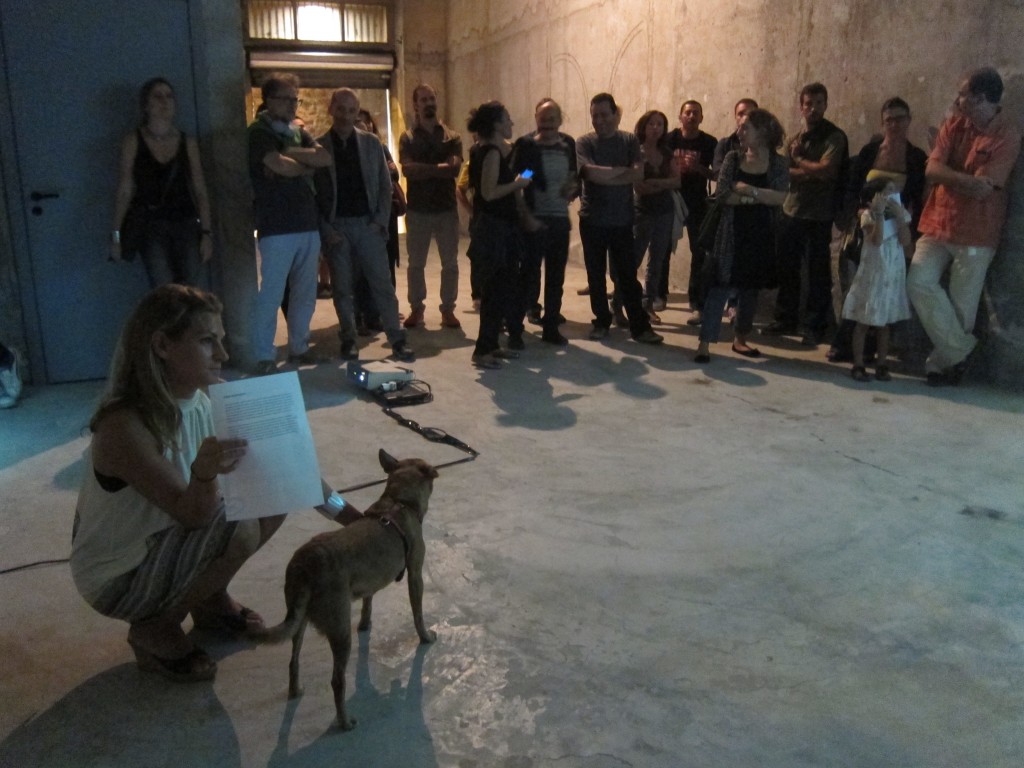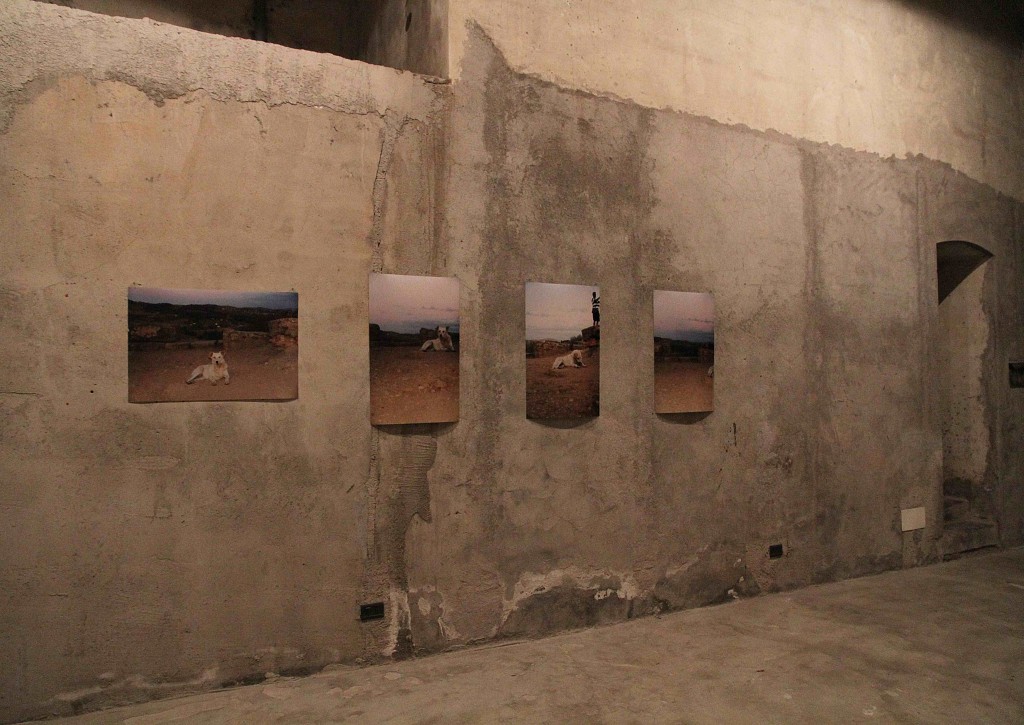Intervista a Jennifer Hope Davy
di Giuseppe Mendolia Calella
Traduzione di Elisa Scarlata e Diletta Costanzo
ita
Chi è Jennifer Hope Davy? Parlaci di te
Jennifer Hope Davy è una ragazza. Ama l’arte, anche se la mette costantemente in discussione. Ama viaggiare. Ama perdersi, che sia in viaggio o nel proprio giardino. Lei ama e odia le persone. Ricorda che qualcuno le disse che “tanto si odia una persona quanto la si ama”. La famiglia e la comunità sono molto importanti, così come il cibo, il vino, la danza e la musica. Una bella chiacchierata la rende molto felice. È nata e cresciuta principalmente a Jersey (New Jersey, USA), ed un po’ a New York. Trovava la scuola molto noiosa, e probabilmente ha passato più tempo a guardare fuori dalla finestra che ad ascoltare la lezione. Ha tentennato tra lo studio ed il lavoro in Europa, New York, Seattle, San Francisco e Texas. Poi ha finito per insegnare, ed è stata una cosa positiva perché ha trovato questa esperienza molto appagante ed ha amato collaborare. Si è attualmente “stabilita” a Berlino e oltre all’arte e alle scrittura lavora come freelancer e come insegnante.
Parlando in modo più formale, Davy si è laureata in Belle Arti all’istituto d’arte di San Francisco, ha conseguito un master in critica e storia dell’arte all’Università del Texas ed ha da poco terminato il suo dottorato di ricerca alla “European Graduate School” (EGS) dedicandosi particolarmente alla teoria e alla pratica dell’arte contemporanea. Oltre all’arte e alla scrittura, Davy ha lavorato come curatrice, editore, produttrice e insegnate d’ arte.
Che genere di musica ascolti? Qual è l’ultimo libro che hai letto? Chi sono gli artisti che ami?
Queste sono sempre delle domande difficili per me, perché ho troppe risposte, me ne piacciono diversi! Sono cresciuta in una famiglia di pianisti di musica classica (da parte di mia madre), quindi un organo da chiesa che suona Bach mi ricorda mia nonna; il concerto numero tre per pianoforte di Rachmaninov mi ricorda mia zia; la sonata per piano di Chopin mi ricorda mia madre; e mi piacciono le sonata per piano di Elliot Carter. Ho guidato l’auto verso Agrigento ascoltando i Led Zeppelin, e sono tornata a Catania ascoltando Elton John. Chavela Vargas e Johnny Cash mi hanno allietato alle 3 del mattino. Il mio nuovo favorito è Grimes ed in due settimane ho visto/ascoltato Animal Collective! L’ultimo libro che ho letto era di Chris Kraus, Where Art Belongs, e mi ha fatto credere di nuovo nell’arte. Adesso sto leggendo Corazon tan blanco di Javier Marias (ho la cattiva abitudine di iniziare a leggere tanti libri insieme e di non finirli tutti). Artisti che amo… è difficile, a volte ci sono solo delle opere che mi piacciono o passioni temporanee. Amo Caravaggio, Manet e Duchamp. Poi ci sono Ed Ruscha, Vija Celmins, Cindy Sherman, Paul McCarthy, Hills Snyder, Sophie Calle, Francis Alys e Phil Collins. Apprezzo molto Walid Raad, Hubbard & Birchler, Jane & Louise Wilson, Trisha Donnelly, Claire Fontaine, Omer Fast, Johanna Billing, Fikrit Atay, Clemens von Wedemeyer, Ryan Trecartin, Tino Seghal, Keren Cytter, Theaster Gates and Kimberly Clark. Ok… basta!
Devo menzionare Schwalbe, anche se non sono artisti visuali, ma ho appena visto una loro esibizione lo scorso fine settimana… sono davvero brillanti!
Come definiresti il tuo lavoro?
Variegato. Molto variegato!
C’è stato un evento o un incontro che ha segnato particolarmente la tua ricerca?
Tornare a casa da scuola camminando lungo la ferrovia. Esibirsi in una performance in uno spazio di Parigi prima che lo conoscessi. Trasferirsi. Wolfgang Schirmacher e la EGS (European Graduate School), e diverse persone che ho incontrato nella “magic mountain”. La morte e la separazione.
Il 6 ottobre scorso hai presentato al BOCS di Catania “Castrato”: il risultato del tuo soggiorno in Sicilia. Su cosa hai lavorato?
Il progetto su cui ho lavorato per BOCS aveva più sfaccettature, ed è ancora in corso. In termini didattici comprendeva fotografia, video, disegno, oggetti in creta ed un racconto breve, di cui un estratto è stato recitato all’opening da Gianluca Lombardo che leggeva dal testo principale, mentre altri recitavano le note a piè di pagina (svolgendo la funzione di un coro greco).
In generale mi interessavano le origini ed il tempo; e l’impossibilità di essere capace di catturarle del tutto o di incapsularle. In questo vi è la storia, la cultura, la natura e l’economia che lavorano insieme per plasmare, manipolare e cambiare. In questo vi è il tralasciato che spesso trovo più interessante e il dire “fuori scena” in opposizione al dire “sulla scena”. Castrato: tagliato da una scena e quindi un titolo piuttosto letterario per quanto metaforico (e spontaneo), forse in parte ironico e in parte appropriato, il progetto che ho realizzato al BOCS credo fosse/sia davvero “lento” e tranquillo”.
Cosa porti con te a Berlino di questa permanenza in Sicilia?
Riporto con me il tempo, il calore e l’ispirazione (ed anche qualche chilo in più). Il tempo e il luogo (o il non luogo) sono temi interessanti per me e anche senza riferimento specifico alla Sicilia, la variazione di “fuso orario” è enfatica ed ha un grande effetto. Esiste sempre un tempo variabile dentro il quale noi viviamo, tuttavia essere in un posto come la Sicilia sottolinea quella qualità del tempo, di essere puntuali, e di essere tagliati fuori dal tempo .
Quali sono le tue impressioni sulla Sicilia, Catania, e via Grimaldi?
Mi sono innamorata della Sicilia! Mi manca e mi piacerebbe tanto tornare.
La Sicilia fa si parte dell’Italia, ma è un posto a sé, un posto dove convivono diverse culture, lingue, economie e fusi orari. Catania mi è piaciuta molto; è una città piccola ma vivace che sembra non “cedere alla sua energia”. Mi piace il modo in cui le persone vivono: “ad alta voce” (sono del Jersey e ci sono molte somiglianze che colpiscono). Via Grimaldi è un posto speciale per me adesso che ho camminato ripetutamente lungo la strada con il mio cane. È diventata casa, anche se temporaneamente. È sembrato come un altro spazio nel tempo o un passaggio nel tempo (non è da prendere in modo drammatico, mi sono sentita solo persa nel tempo). Per me, via Grimaldi, il Castello Ursino ed i suoi dintorni sembravano essere l’anima di Catania. Ma forse sto solo romanticizzando la cosa; mi sono fatta dare un passaggio da un tipo di Catania e mi ha detto questa cosa… (ma forse anche lui stava facendo il romantico). È stata un’esperienza meravigliosa conoscere questa zona ed i suoi abitanti, essenzialmente grazie al tempo e al mio cane (è venuto fuori che il mio cane Pepe parla Italiano meglio di me).
Anche se è solo narrativa ed una storia con diversi temi, leggere via grimaldi probabilmente da la migliore impressione della mia impressione della Sicilia, Catania, e Via Grimaldi.
Come definiresti il panorama artistico siciliano?
Non saprei descrivere il panorama delle arti visive siciliane poiché non sono rimasta abbastanza o non sono stata coinvolta abbastanza. Per quel poco che ho afferrato, l’arte visiva, seppur più esigua, non sembra essere affatto diversa da quella del “continente” o “generale”. Ci sono certe estetiche che sono sicuramente più legate alla regione, ma adesso l’estetica contemporanea che non ha confini. Non sono sempre sicura che questa sia una cosa buona perché ognuno sta facendo, e a volte pensa di fare, un lavoro che appare e si considera “contemporaneo”. Ma è anche il risultato di “un’accademia” e del fatto di essere parte di un determinato tempo.
Ciò che ho visto sono stati artisti eccellenti e impegnati che hanno davvero una loro voce. Ciò che amo di più di questo progetto, Balloon, è la devozione che avete alla “vostra scena”, al di dentro e al di fuori di una scena più ampia. E ammiro anche il profondo senso di sincerità e rigore intellettuale. E, anche se c’è un numero limitato di spazi, questi spazi sono incredibilmente attivi, entusiasti e di supporto. È stato davvero rinfrescante essere vicini a quel tipo di energia, come opposta ad una più cinica e competitiva.
La prossima volta trascorrerò più tempo con la comunità artistica locale invece che per i fatti miei ;). Sono arrivata a Catania tramite Giuseppe Lana, con il quale abbiamo subito istaurato uno spirito di squadra ed il rispetto per il lavoro reciproco (sui pc portatili a Berlino). Durante il mio soggiorno in Sicilia, ho avuto la fortuna di vedere un progetto espositivo contemporaneo presso la Valle dei Templi di Agrigento con gli artisti in residenza Domenico Sciajno e Sergio Zavatteri curata da Giusi Diana. Ho anche passato del tempo, e volevo restare nell’Abissale di Gianluca Lombardo, e sto ancora trascorrendo il mio tempo con il catalogo di Filippo Leonardi che ho avuto prima di partire, e vorrei tanto vedere di più del suo lavoro!
Che progetti hai per i prossimi mesi? A cosa stai lavorando?
adesso sto finendo il mio manoscritto per pubblicare la mia dissertazione, staging aporetic potential, e sto lavorando su un saggio fotografico per blind reading, un progetto di libro collettivo con Jeremy Fernando e Julia Hölzl. Inoltre, molte altre richieste e lavori come freelancer! L’anno prossimo sarò nuovamente a Bangkok come insegnante temporanea e “metterò in scena” un altro progetto di immagine e scrittura.
| ENG |
Who is Jennifer Hope Davy? Tell us about you…
Jennifer Hope Davy is a girl. She loves art even though she constantly questions it. She loves to travel. She loves getting lost, whether travelling or in her own backyard. She loves, and hates, people. She recalls someone telling her the degree to which you can hate someone is the degree to which you can love someone. Family and community are very important, and so is food, wine, music and dance. A great conversation can make her day. She was born and raised primarily in jersey (new jersey, usa), along with some new york. School was mostly boring and she probably spent more time looking out the window than she did paying attention. she wavered between study and work in europe, new york, seattle, san francisco, and texas. There she fell into teaching and it was a good fall because she finds it very fulfilling and loves to collaborate. She is now currently “based” in berlin and in addition to art and writing does freelance work and visiting teaching gigs.
More formally speaking, davy received her fine arts degree from the san francisco art institute, her masters in art history and criticism from the university of texas and recently completed her phd at the european graduate school (egs) focusing on contemporary art theory and practice. in addition to art and writing, davy has worked as a curator, editor, producer and professor of art.
What kind of music do you listen? What is the last book have you read? Who are artists you love?
These are always difficult questions for me because i have too many answers, i like a lot! I grew up in a family of classical pianists on my mother’s side and so Bach on a Church organ reminds me of my grandmother; Rachmaninov’s 3rd piano concerto reminds me of my aunt; the Chopin piano sonatas remind me of my mother; and I like Elliot Carter piano sonata. I drove to Agrigento listening to Led Zepplin and returned to Catania listening to Elton John. Chavela Vargas and Johnny Cash make me happy at 3 in the morning. My new favorite is Grimes and in two weeks I get to see/hear Animal Collective! The last book I read was by Chris Kraus, Where Art Belongs, and it made me believe in art again. I’m also still reading Corazón tan blanco (A Heart So White) by Javier Marias (I have a bad habit of starting various books at a time and not always finishing). Artists I love—that’s hard, sometimes there’s just favorite pieces or on/off crushes. Hmmm, love, well I love Caravaggio, Manet, and Duchamp. And then there’s Ed Ruscha, Vija Celmins, Cindy Sherman, Paul McCarthy, Hills Snyder, Sophie Calle, Francis Alys and Phil Collins. And more or less crushes or appreciation for Walid Raad, Hubbard & Birchler, Jane & Louise Wilson, Trisha Donnelly, Claire Fontaine, Omer Fast, Johanna Billing, Fikrit Atay, Clemens von Wedemeyer, Ryan Trecartin, Tino Seghal, Keren Cytter, Theaster Gates and Kimberly Clark. Ok, stop! Ok, but i just have to mention Schwalbe even though they’re not visual artists, but just saw a piece of theirs performed last weekend and it was brilliant!
How you define your job?
Varied. very varied.
There was an event or meeting have signed your research, particularly?
Walking home from school along the train tracks. doing a performance in a room in paris before i knew it. moving. wolfgang schirmacher and egs (european graduate school), and many i met on that “magic mountain”. death and separation.
Last 6 October you have showed, into BOCS of Catania “Castrato”, the expositive project, result of your residence in Sicily…What have you worked on?
The project i worked on for BOCS was multi-faceted and is still in progress. In didactic terms it was comprised of photography, video, drawing, clay objects and a short story, an excerpt of which was ‘performed’ at the opening with Gianluca Lombardo reading from the main text and XXX performing the footnotes (function like a greek chorus).
In general, I was interested in origins and time; and the impossibility of being able to effectively capture or encapsulate either. Within that there is history, culture, nature and economy that all work to shape, manipulate and mutate as such. Within that, is the overlooked, which i often find more interesting and telling—off-stage as opposed to on-stage. castrato: cuts from a scene is then a pretty literal title as much as it is metaphoric (and spontaneous). perhaps in part ironic and in part fitting, the project i produced at BOCS i think was/is very “slow” and “quiet”.
What do you take in Berlin after this experience?
I take back time, warmth, and inspiration (and quite a few extra kilos). Time, and place (or displace) is definitely a theme of interest for me and while it is not necessarily specific to Sicily, the variations of “time zones” is emphatic and has had a great affect. There’s always already varying time(s) that we inhabit yet being in a place like Sicily underscores that quality of time and being in time and being cut-off in time.
What impression have you had about Sicily, Catania and Via Grimaldi?
I fell in love with Sicily! i miss it and i would love to come back.
Sicily is still Italy, but very much its own place, a place of many cultures, languages, economies and time zones. Catania I liked very much, it is a small, but very vibrant city that never seems to yield in its energy. I love how people seem to live “out-loud” (but i’m also from jersey and there are striking similarities). Via grimaldi is a very special place for me now as I’ve walked its pavement repeatedly with my dog. It became home, however temporary. It very much felt like an other space in time or passage in time (but not to be taken so dramatically, just feels lost in time). For me, via grimaldi and castello ursino and the surrounds felt like the soul of Catania. But maybe i’m just romanticizing it; although i’d hitched a ride with someone and that’s what he said and he was a native (but maybe he was romanticizing it too). It was a wonderful experience to get to know the area and its inhabitants, essentially through time and a dog (it turns out that my dog Pepe speaks much better Italian than I do).
even though it is fiction and a story of varying themes, reading via grimaldi probably gives the best impression of my impression of Sicily, Catania and Via Grimaldi.
How would you define the artistic landscape of Sicily?
I couldn’t define the landscape of the sicilian art scene as i wasn’t there long enough or involved enough. From what i gathered, though smaller, the art scene does not seem all that different than the art scene on the “mainland” or “in general”. There are certain aestethics that can be more regional surely, but now there is much more of a contemporary aesthetic that doesn’t have boundaries. I’m not always sure that’s a good thing because then everyone is just making work that looks, and sometimes thinks, “contemporary”. But this is also a result of “the academy” and being a part of a time.
What i did witness were beautiful and committed artists who very much have their own voice. What i love most about this project, Balloon, is your commitment to “your scene” within and without a larger scene. As well as a deep sense of sincerity and intellectual rigour. And, while there is a limited amount of spaces, those spaces are incredibly active, enthusiastic and supportive. It was really refreshing to be around that kind of energy as opposed to a more cynical and competitive one.
Next time, i’ll spend more time with the art scene than my own;). I came to Catania through Giuseppe Lana in which we found a comraderie and respect in eachother’s work (over laptops in Berlin). While in Sicily, I was fortunate to see a really nice setting of the contemporary historically situated in the Valley of the Temples with Domenico Sciajno and Sergio Zavattieri curated by Giusi Diana. I also spent time, and wanted to stay in Abissale by Gianluca Lombardo, and I’m still spending time with Filippo Leonardi’s catalogue I got before leaving and would very much like to see more of his work!
What are your plan for the next months?
Right now i’m finishing up my manuscript to publish my dissertation, staging aporetic potential, and working on a photographic essay for blind reading, a collaborative book project with Jeremy Fernando and Julia Hölzl. As well, lots of applications and freelance work! in the new year i’ll be in bangkok again as a visiting professor and “performing” another image and writing project.
(1)-(4) Jennifer Hope Davy, Castrato: tagli da una scena, progetto espositivo che raccoglie gli esiti della residenza presso il BOCS (Box of contemporary space) di Catania, Ottobre 2012.




